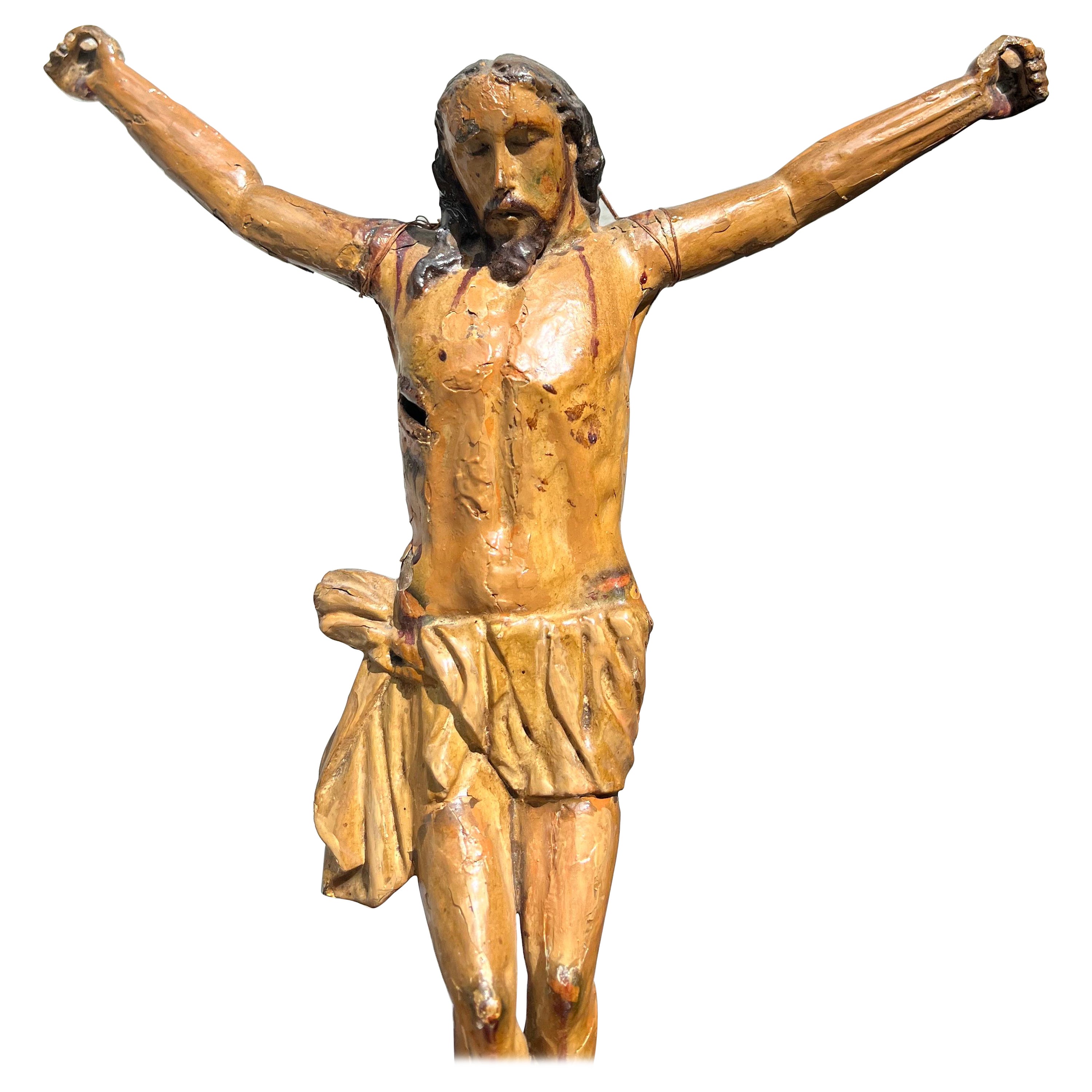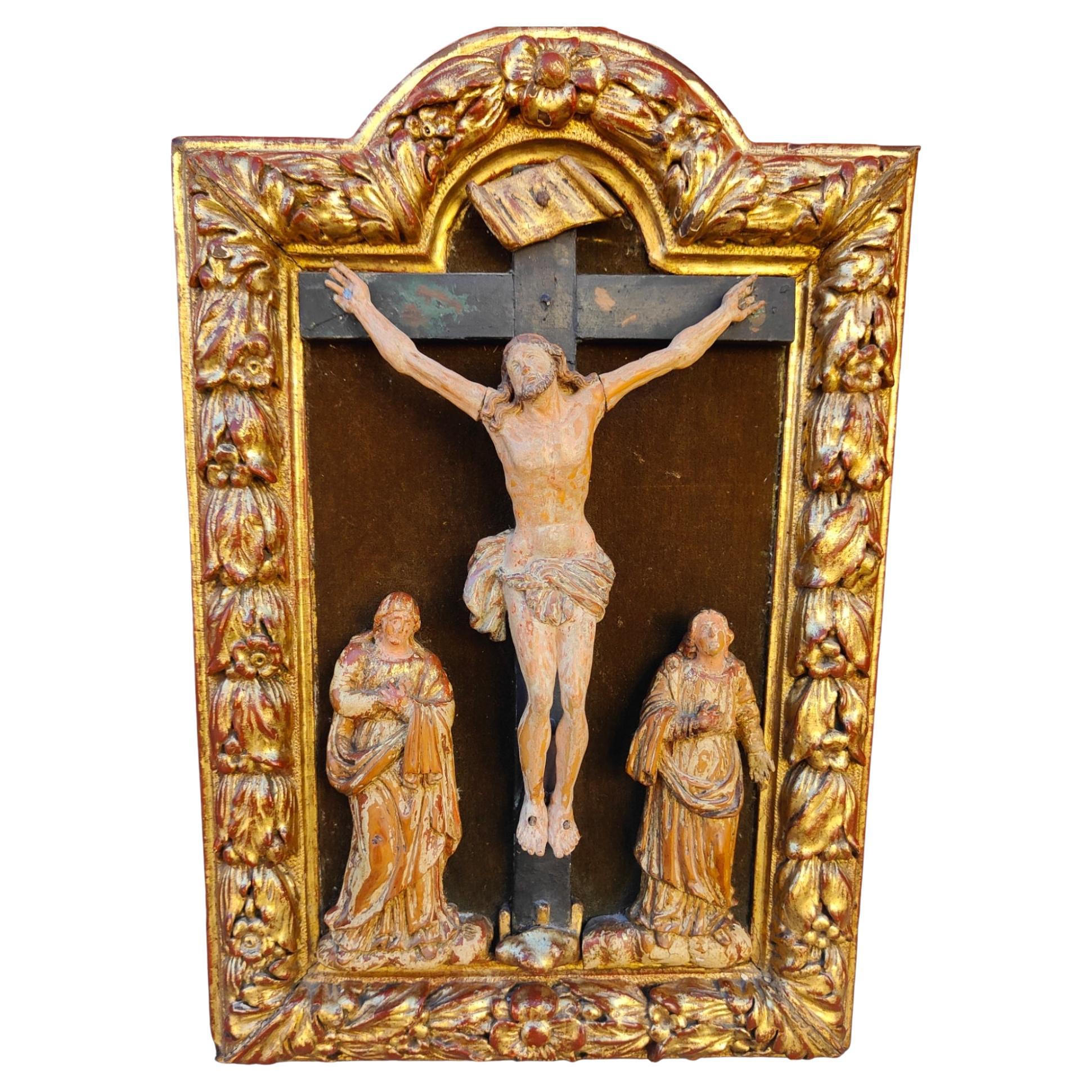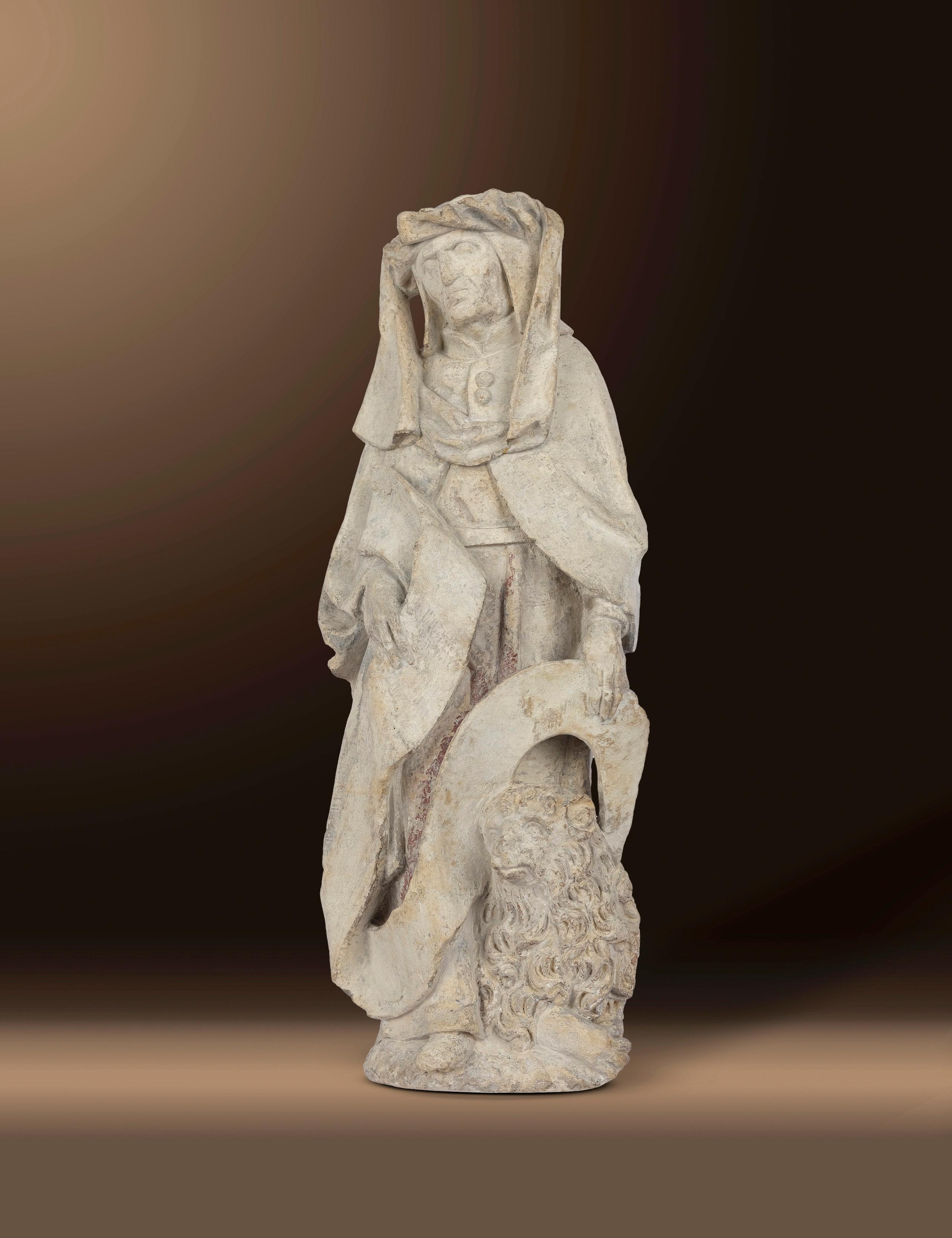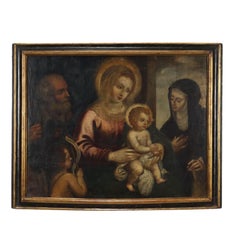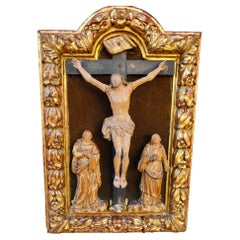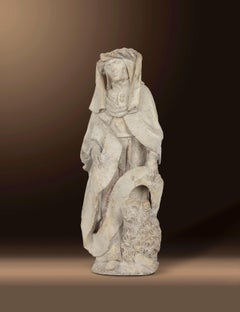Items Similar to Christian Orthodox Alabaster Icon (Ethiopia) First half of 20th century
Want more images or videos?
Request additional images or videos from the seller
1 of 11
UnknownChristian Orthodox Alabaster Icon (Ethiopia) First half of 20th century1900s
1900s
$5,226.50
$6,533.1220% Off
£3,917.91
£4,897.3920% Off
€4,400
€5,50020% Off
CA$7,226.94
CA$9,033.6820% Off
A$7,865.68
A$9,832.1020% Off
CHF 4,203.14
CHF 5,253.9320% Off
MX$94,987.44
MX$118,734.3020% Off
NOK 52,823.18
NOK 66,028.9820% Off
SEK 49,131.70
SEK 61,414.6320% Off
DKK 33,527.47
DKK 41,909.3420% Off
About the Item
This stone icon depicts the Crucifixion at the top and Calvary at the bottom. At the foot of the Cross is Our Lady and St. John the Evangelist. The tormentor who flogs Jesus on his ascent to Golgotha is portrayed in profile as is generally the case for villainous characters. The portrayal is intense and exudes a deep pathos, though maintaining a certain spiritual detachment typical of the mysticism of the Orthodox Church. The static nature of the crucifixion, which expresses the tragic nature of an irreparable event, is contrasted by the dynamism of Calvary in which human suffering and a sense of defeat are still protagonists. John appears distraught. But in the soothing face of the crucified Christ and the revealing gesture of the Virgin Mary pointing with her hand to the Son of God, the exultation of Easter is already anticipated.
The Christian religion spread to the kingdom of Axum (capital of the mythical kingdom of Sheba) in the mid-4th century, under King Ezana, who converted from polytheism to monotheism and then to Christianity. In the fifth and sixth centuries, Syrian monks (whom tradition identifies as the "Nine Saints" and the "Righteous Ones") traveled to the kingdom to spread the new faith. Ethiopians, for that matter, proudly claim to be directly descended from the Solomonic dynasty through Menilek, son of Azieb (or Makeda), Queen i Sheba, and Israel's King Solomon. There is no doubt that Ethiopian icon art is related to that of the Eastern tradition, particularly Greek-Byzantine, whose sacred iconography it retains while reserving much attention to the figures of local saints and anchorites. However, the production of icons would only begin or gain momentum from the 15th century onward, under Emperor Zara Yacob, thanks to the arrival of foreign artists, especially Italians. Stone sculptures such as this one, preserved within monasteries and churches, reveal a greater stylistic autonomy than Eastern models. This specimen, in particular, reveals a finesse of execution not currently found. The material, green alabaster, also differs from that used in recent production in which a soapstone is preferred that is easy to work and does not tend to chip.
- Creation Year:1900s
- Dimensions:Height: 9.45 in (24 cm)Width: 6.7 in (17 cm)Depth: 1.97 in (5 cm)
- Medium:
- Period:
- Condition:
- Gallery Location:Milan, IT
- Reference Number:1stDibs: LU680316028302
About the Seller
4.8
Vetted Professional Seller
Every seller passes strict standards for authenticity and reliability
Established in 2017
1stDibs seller since 2017
126 sales on 1stDibs
Typical response time: 2 hours
- ShippingRetrieving quote...Shipping from: Milan, Italy
- Return Policy
More From This Seller
View AllChristian Orthodox icon on panel (Ethiopia) First Half of 20th Century
Located in Milan, IT
Framed wooden icon with a depiction of a winged devil in chains in the center. This could be Lucifer, the rebel angel who fell from Heaven and became the prince of all demons and was...
Category
Mid-20th Century Other Art Style More Art
Materials
Oil
$5,226 Sale Price
20% Off
Painting Jesus Falls During the Way of the Cross 17th-18th century
Located in Milan, IT
Oil on Canvas.
The scene corresponds to a Stations of the Cross, during which Jesus falls under the weight of the heavy cross, which he carries on his shoulders as he ascends to Golg...
Category
Late 17th Century Other Art Style Figurative Paintings
Materials
Oil
$997 Sale Price
20% Off
Painting Holy Family with Saints 17th century
Located in Milan, IT
Oil on Canvas. Venetian school of the 17th century.
The figures, portrayed in the half-length foreground, have Mary placed in the center holding the infant Jesus; behind them on the ...
Category
17th Century Other Art Style Figurative Paintings
Materials
Oil
$3,468 Sale Price
20% Off
Painting Mystic Marriage of St. Catherine 16th century
Located in Milan, IT
Oil on chestnut board. Central European school of the 16th century.
The traditional scene, presents the Infant Jesus who, in the arms of his Mother with whom he exchanges a tender gl...
Category
16th Century Other Art Style Figurative Paintings
Materials
Oil
$4,732 Sale Price
20% Off
Painted Christ the Redeemer and Angels 17th-18th century
Located in Milan, IT
Oil on Canvas. North Italian school of the 17th-18th centuries.
The scene has in its center the figure of the Risen Christ who, seated on the clouds, holds the Cross with one hand an...
Category
18th Century and Earlier Other Art Style Figurative Paintings
Materials
Oil
$2,233 Sale Price
20% Off
Painting with a Healing Scene 17th Century
Located in Milan, IT
Oil on copper. Flemish school of the seventeenth century.
The painting, attributed by oral tradition to Frans Francken the younger (1581 -1642), depicts a miraculous healing perform...
Category
17th Century Other Art Style Figurative Paintings
Materials
Oil
$7,507 Sale Price
20% Off
You May Also Like
Antico Crocefisso Ligneo - policromo - buone condizioni - vari restauri - XVIII
Located in Milano, MI
Antico Crocefisso Ligneo - policromo - buone condizioni - vari restauri - XVIII
Descrizione
Antico Crocefisso Ligneo, Policromo in buone condizioni generali strutturali. Nel tempo ...
Category
Antique Early 18th Century Italian Figurative Sculptures
Materials
Wood
Apostel group
Located in Wien, Wien
APOSTLE GROUP
ORIGINAL VERSION
Flemish/Brabant
Around 1500
Oak wood carved
Height 37.5 cm, width 12 cm,
Depth 12.5 cm
Category
15th Century and Earlier Figurative Sculptures
Materials
Wood
$19,800
Calvary XVIIth Century, Religious
Located in Madrid, ES
Calvary XVIIth century, religious
17th Century Calvary, religious Ancient Calvary from the 17th century carved in boxwood Boxwood is characterized by its hardness and difficult pruning. It has traces of polychromy and gold. Measure: 65x45...
Category
Antique 1670s European Classical Roman Religious Items
Materials
Fruitwood
Hl. Hieronymus
Located in Wien, Wien
St. Jerome
347 Stridon, Croatia - 420 Bethlehem
Around 1500/20
Limestone
Remains of the original polychromy
Height 45 cm
The man with the holy name!
347 Stridon, Croation – 420 Be...
Category
16th Century Figurative Sculptures
Materials
Limestone
Important Sculpture
Located in ROUEN, FR
"Important Sculpture
IMPORTANT SCULPTURE representing Saint Floran de Lorch in polychrome wood in its beautiful old polychromy. He is represented ...
Category
16th Century Figurative Sculptures
Materials
Wood
$8,017
Ancient religious relief
Located in Rome, IT
Marble relief, probably made in Greece, early 20th century,. ADDITIONAL PHOTOS, INFORMATION OF THE LOT AND SHIPPING INFORMATION CAN BE REQUEST BY SENDING AN EMAIL. Indicative shippin...
Category
Mid-20th Century Italian Figurative Sculptures
Materials
Marble
$4,632
